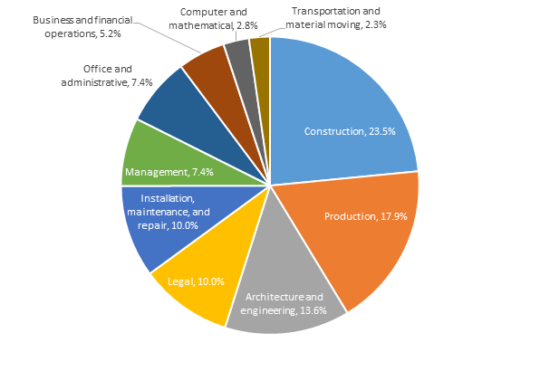What does a million-worker clean energy workforce look like?
As the country looks to restart the economy following the COVID-19 pandemic, here’s a truism we can’t forget—clean energy is one of the largest job creation machines in U.S. history. Wind technician and solar installer have been two of the three fastest growing jobs in the U.S. for years, and over 415,000 Americans across all 50 states have direct clean energy jobs. By 2030, there could be over 1 million clean energy jobs.
That’s great news as we look to put Americans back to work in the months and years ahead, but it also presents a challenge. How do we ensure the coming clean energy workforce has the skills, knowledge, and experience they need to help build a 21st century clean energy economy?
These questions and more are answered in a new report, The “2021 Clean Energy Labor Supply Report” from BW Research and released by American Clean Power. The study examines the broad scale and diverse scope of the good-paying clean energy jobs Americans already have, and it looks at the many new positions that need to be filled as the nation drives toward its decarbonization goals. It also finds that the clean energy workforce is highly unionized compared to other private U.S. industries.

The report models two scenarios that factor in 50 percent and 70 percent of U.S. electricity generation from renewables by 2030; details the current clean energy employment and union rates during the siting and construction of projects; and compares the expected high occupational demand and labor gaps associated with increased deployment of renewables.
Here are a few highlights.
Clean energy: A behemoth job creator
- Hitting 50 to 70 percent clean energy targets would create 500,000 to 600,000 jobs during development and construction of clean energy projects.
- The manufacturing sector would see the highest share of this work, with 38 percent directed there.

Who’s hiring
In recent years, some observers have criticized clean energy jobs as mostly being temporary construction positions. That discounts the quality careers clean energy construction offers, and it’s also not accurate, as the new report demonstrates. It finds 35 different positions, of which construction is only one, will see increased job growth. These fields include construction, architecture and engineering, welders and machinists, metal fabricators, transportation, and electricians, among others.

And these positions pay well. In fact, among the top 35 growth fields, 65 percent support an annual wage higher than the national average of $56,310. Some fields– like mechanics, electrical engineers, and civil engineers– can earn up to 47 percent more than the average American.
Unionization and the clean workforce
Unions have a strong footprint in the clean energy workforce– rates for solar, wind, and battery storage are higher than the national private sector average, and they’re expected to grow as demand for trade workers increases as additional renewable are designed, built, and operated. The clean energy industry has an overall unionization rate of 10 percent, compared to a 7.7 rate across the private sector.
The importance of union workers in clean energy’s future is poised to grow. Electricians (31.1 percent membership, 32.4 percent coverage) and metal fabricators and fitters (21 percent membership and coverage) have among the highest rates of union membership and coverage, and offshore wind manufacturing and assembly will require many skilled trades workers, including many types currently used in the fossil industry.
Preparing the next generation of clean energy workers
The collective challenge the nation faces will be filling these clean power jobs, and that’s a test the country is eager to face as we rebuild and decarbonize our economy. We need an “all-hands-on-deck” approach to recruit and train the next generation of the clean power workforce. The work and the need is here—let’s not waste a generational job creation opportunity.

